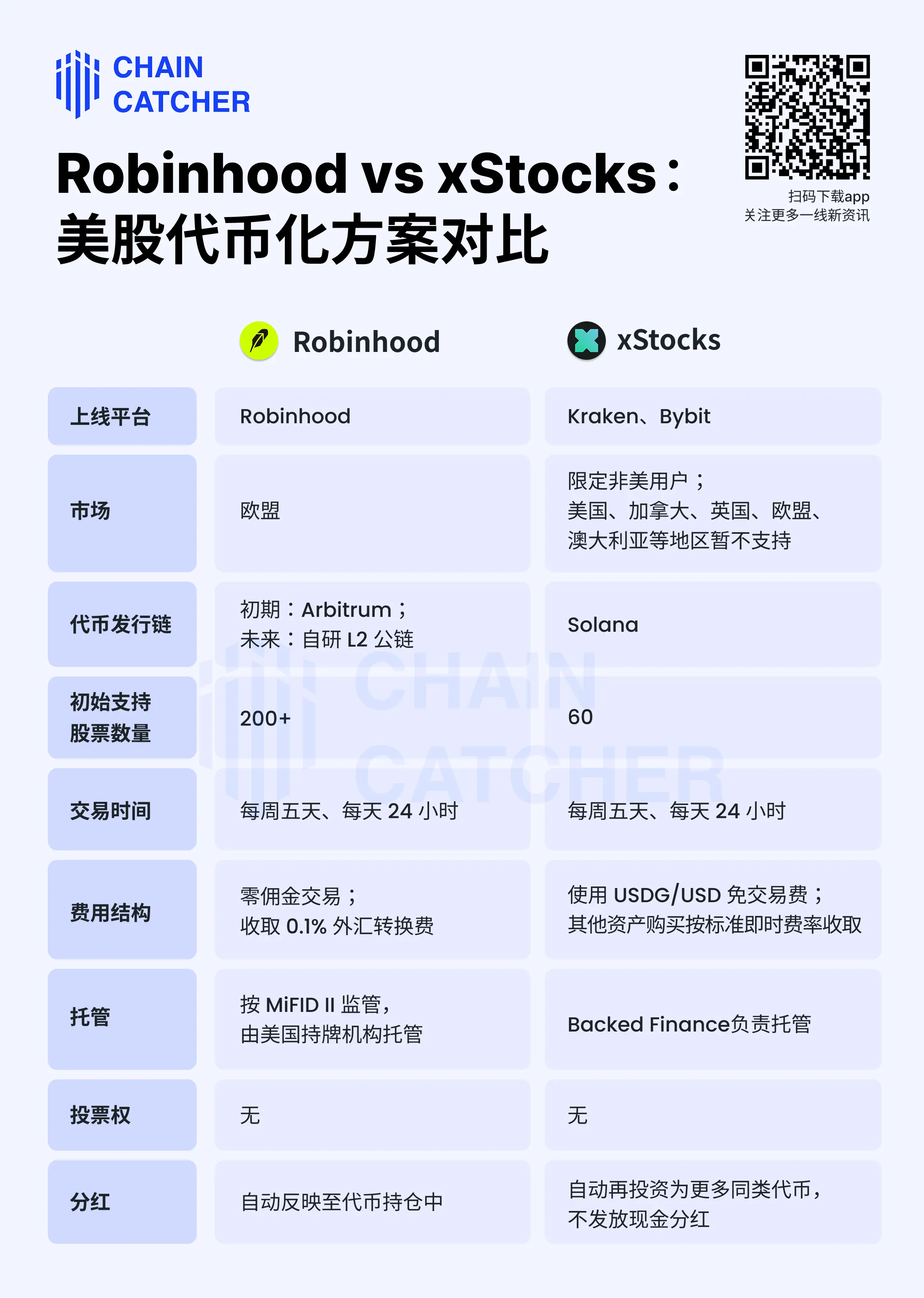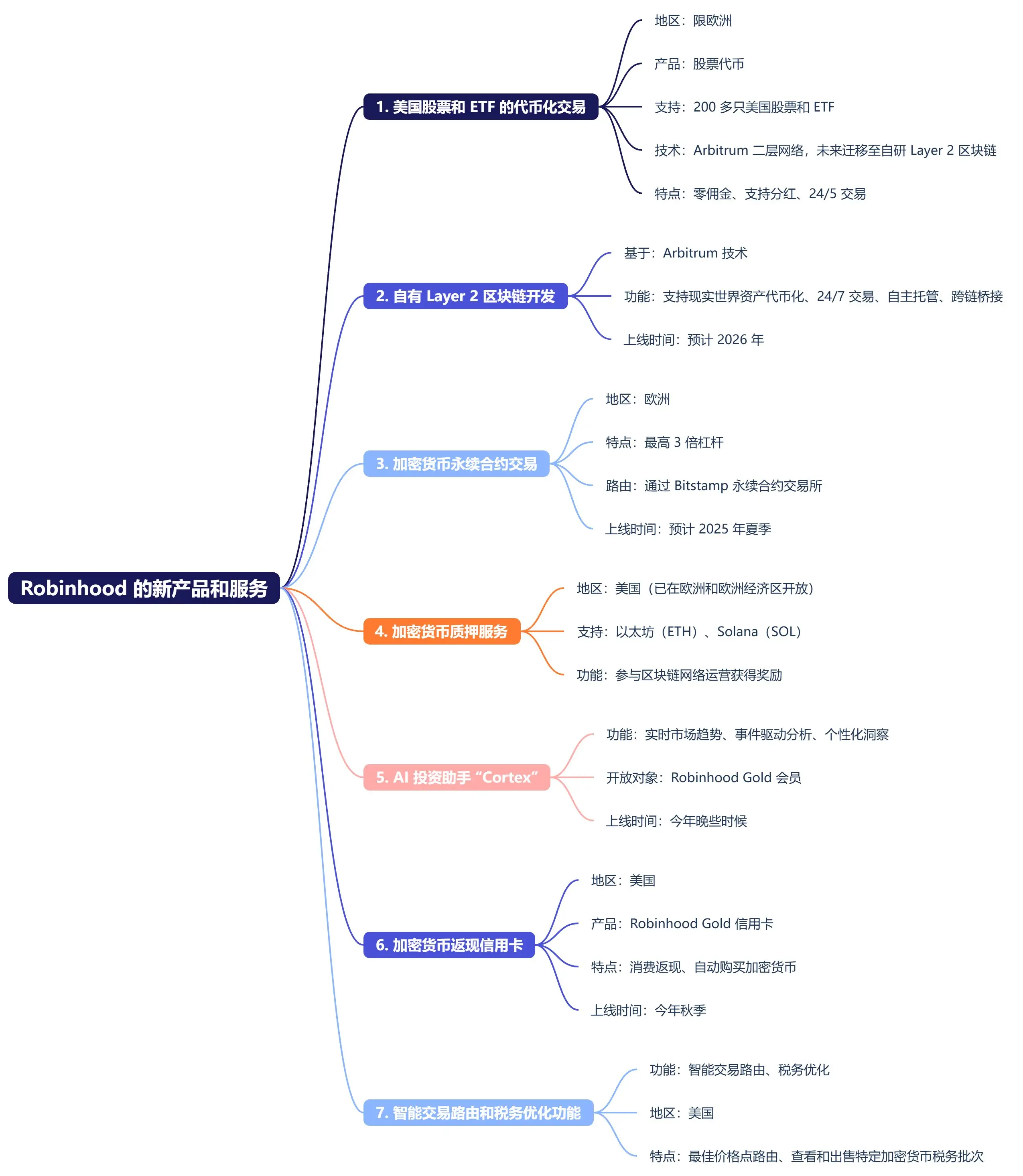Author: Fairy, ChainCatcher
Editor: TB, ChainCatcher
The era of coin stocks has fully exploded.
Last night, Robinhood, Kraken, and Bybit successively announced their plans for the tokenization of U.S. stocks, officially breaking the dimensional wall of coin stock trading.
Among them, Robinhood has thrown out a strategic combination punch, directly transitioning from an internet brokerage to a "crypto-driven all-in-one investment platform." At the press conference in Cannes, France, it boldly announced its new crypto strategic matrix: U.S. stock tokenization trading, Layer 2 public chain, credit card cashback for purchasing coins, and more.
Upon the announcement, Robinhood's stock price surged by 12.77%, reaching a new historical high.

Robinhood VS xStocks
In the new wave of U.S. stock tokenization, two forces are quietly colliding: on one hand, internet brokerages represented by Robinhood are entering the crypto field, while on the other hand, crypto-native exchanges like Kraken are making reverse moves into the U.S. stock market. They are approaching the "coin-stock integration" track from two directions, competing for market dominance.
In terms of technology and market strategy, these two forces also show distinct differences. Robinhood has chosen Arbitrum as the token issuance chain and is the first to support the EU market. In contrast, Kraken's xStocks is based on the Solana chain, targeting non-U.S. retail customers, and currently does not cover several mainstream markets, including the EU.
Here is a comparison of the two solutions:

This competition in coin stock trading is essentially a collision and integration of two ecosystems. Internet brokerages attract traditional investors into the crypto space with convenience and compliance advantages; crypto exchanges integrate resources from traditional financial markets to promote a more open financial development. However, with the emergence of high-growth companies like OpenAI and SpaceX offering quality and substantial tokenized assets, the market space for original altcoins and meme coins may be compressed.
Robinhood's New Crypto Strategic Matrix
At the press conference, in addition to announcing the "U.S. stock tokenization trading" highlight, Robinhood also comprehensively outlined its new blueprint for crypto strategy, formulating differentiated development paths for the EU and U.S. markets, aiming to build a complete ecosystem from the trading end to infrastructure.
The EU is currently the core battlefield. Robinhood has expanded its services to cover 30 EU and European Economic Area countries, reaching over 400 million people. In addition to tokenized trading, Robinhood has also launched crypto perpetual contract products and directly announced that its European app will transform into a "crypto-driven all-in-one investment platform."
In the U.S. market, Robinhood is focused on improving the supporting service system for crypto trading: opening ETH and SOL staking services; the Robinhood Gold credit card will support cashback for automatic coin purchases; the AI investment assistant "Cortex" will also be launched to provide token-level intelligent analysis and real-time market interpretation for member users. Additionally, U.S. users can now view and sell specific crypto assets by tax batches, enabling more flexible tax optimization strategies.
The most strategically significant step is that Robinhood is developing its own Layer 2 blockchain. This public chain is built on the Arbitrum tech stack and will eventually support the issuance, trading, and cross-chain bridging of all tokenized assets, becoming the "landing point" and "engine" of Robinhood's crypto ecosystem. If the model proves successful, the digital reconstruction of the entire trillion-dollar TradFi market, including bonds, futures, insurance, and real estate, will accelerate.
Here are the seven new optimizations announced by Robinhood:

Image source: @Phyrex_Ni
Why is Robinhood Determined to "All in Crypto"?
Before announcing its new crypto strategy, Robinhood had already begun paving the way for its on-chain layout. In May and June 2025, the company successively acquired the Canadian compliant crypto platform WonderFi for $180 million and the established exchange Bitstamp for $200 million. Robinhood's "all in" on crypto is not a spur-of-the-moment decision, but rather a profound insight into profit structure, market trends, and regulatory changes.
From financial data, crypto has become Robinhood's main source of revenue. In the first quarter of 2025, its total trading revenue was $583 million, with crypto trading contributing $252 million, surpassing options trading's $240 million, accounting for as much as 43%.
In terms of profit margins, the crypto business also significantly leads. According to cutting-edge technology investor Zheng Di, crypto has become its most profitable business. The market-making rebate rate for crypto order flow is 45 times that of stocks and 4.5 times that of options. Robinhood earns an average rebate of about 0.35% per order, with an actual implied cost of 0.55%. Importantly, this income is not limited to the rebate itself but also includes routing premiums and slippage profits.
Moreover, crypto has brought Robinhood new product possibilities, transforming it from a platform for matching trades to a provider of on-chain financial infrastructure.

For Robinhood, crypto is not only an accelerator of profits but also a pathway to the next round of financial dominance. What it is betting on is not just a change in asset forms but the reconstruction of the entire financial infrastructure.
U.S. stock tokenization may just be a stepping stone; the bigger picture is a new financial order that is open and efficient, built on a blockchain foundation.
Recommended Reading:
U.S. listed companies flock to "buy coins," what is the effectiveness of the second growth curve?
免责声明:本文章仅代表作者个人观点,不代表本平台的立场和观点。本文章仅供信息分享,不构成对任何人的任何投资建议。用户与作者之间的任何争议,与本平台无关。如网页中刊载的文章或图片涉及侵权,请提供相关的权利证明和身份证明发送邮件到support@aicoin.com,本平台相关工作人员将会进行核查。




